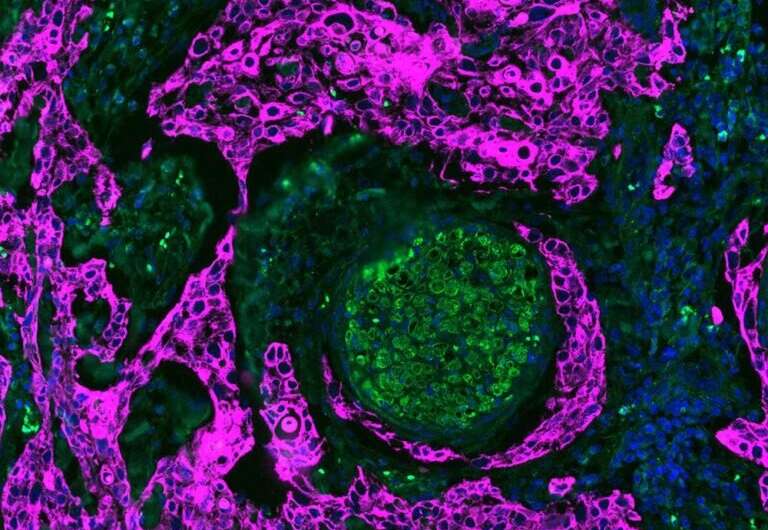Credit: University of Michigan
One of the most terrifying aspects of cancer is its unpredictability: Some cancerous tumors are cured by treatment, while others shrink with treatment only to return later.
A new University of Michigan study identifies a feature in cancer that could help pinpoint treatment-resistant tumors when they are diagnosed, so oncologists know to treat aggressively from the beginning, with the hope of giving patients a better chance at survival.
Researchers examined the role of perineural invasion––defined as when cancer invades the nerves—in oral cancer, and found that while perineural invasion is important, the distance between nerves and cancer may be as important in terms of patient outcomes.
Broadening the definition of perineural invasion could give oral cancer patients better chances of survival with earlier, more aggressive treatment.
"It was previously thought that cancer had to wrap around or be within the nerve to be dangerous. Our study shows that there is a distance gradient that influences the interaction and could improve treatment selection and patient survival," said Nisha D'Silva, the Donald A. Kerr Endowed Collegiate Professor of Oral Pathology at the University of Michigan School of Dentistry.
Although perineural invasion, or PNI, occurs frequently in oral cancer, the diagnostic criteria vary and are subjective. Moreover, the role of perineural invasion as an independent predictor of survival has not been established, D'Silva said.
To better understand the role of perineural invasion, researchers looked at tissue sections from 142 patients with PNI-positive and PNI-negative nerves. They found that perineural invasion in oral cancer is an important predictor of prognosis even before the cancer spreads, D'Silva said. Additionally, patients with nerves close to tumors had poor outcomes even if diagnosed as negative for perineural invasion using current criteria.
Consistent with these clinical findings, analysis of nerves in sections of human tumors show a gradient of expression of stress genes that is dependent on the distance between nerves and tumors, D'Silva said. This suggests that cancer cells induce an injury response in the nerve—the closer the cancer, the greater the nerve injury and the worse the cancer behaves.
The study also showed that patients with large nerves in the tumor had poor survival rates, which suggests that even noncancerous nerves in the tumor facilitated tumor growth. Together, these findings support revising the current definition of perineural invasion to account for these nerve-cancer interactions, D'Silva said.
Broadening the definition of perineural invasion based on nerve-tumor distance and including assessment of nerve diameter could improve treatment selection and, ultimately, reduce tumor recurrence and improve patient survival, she said.
The findings appear in Clinical Cancer Research.
More information: Ligia B. Schmitd et al, Spatial and Transcriptomic Analysis of Perineural Invasion in Oral Cancer, Clinical Cancer Research (2022). DOI: 10.1158/1078-0432.CCR-21-4543
Journal information: Clinical Cancer Research
Provided by University of Michigan
























